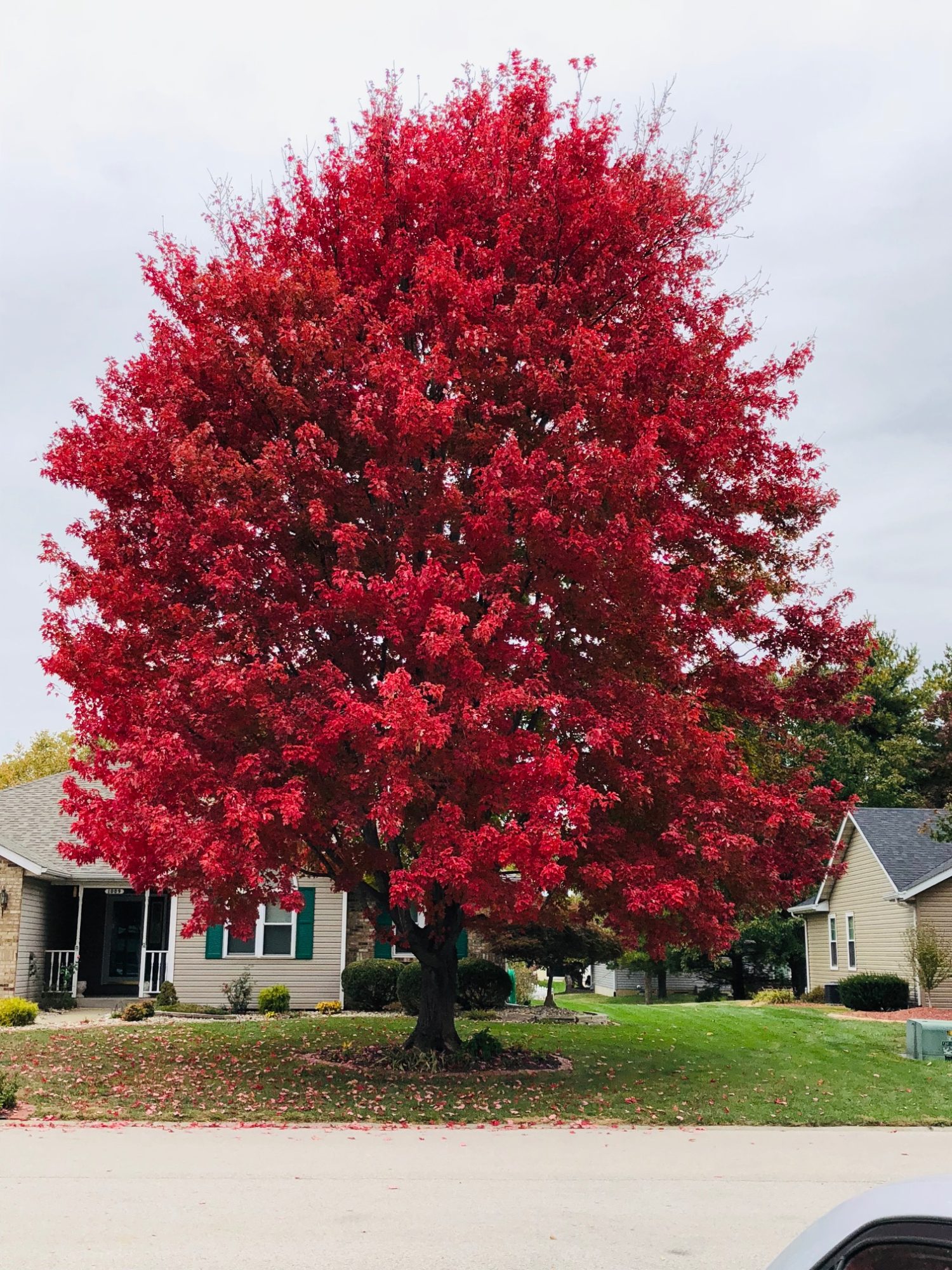Blog, Home Gardening Tips
The Best Trees To Plant For Fall Color In the Midwest
Fall in the Midwest countryside is always a gorgeous treat for the eyes: A collage of reds, yellows, and oranges that are an attraction to both tourists and locals. If you want a piece of the fall beauty in your own lawn, these trees are the ones to plant.
Up Next: Is Fall The Best Time To Plant Your Trees? Yes!
Red Oaks, Black Gum, & Dogwood For Deep Reds

For a tree that will turn a deep red and maintain its color throughout the season, the red oak is the tree to plant in your yard.
Considered a “national treasure” this tree grows quickly, about two feet per year and can reach a height of 75 feet and a spread of 45 feet. This makes the tree a good shade tree in addition to that coveted fall color. So if you have a smaller yard, consult with a professional arborist to determine if the right tree is for you. Too large a tree and it can scrape against your home.
Other beautiful choices for fall reds are:
- Black gum (Nyssa sylvatica), a tree that really stand out with not only it’s red color, but shades of yellow, orange, and even a purple hue!
- Flowering dogwood may sound surprising for fall color, but it’s true: this tree is gorgeous year-round, with its milk-white flowers in the spring that give way to a deep scarlet leaves and berries in the fall.
Birches, Hickory, & Ginkgo For Bright Yellows
No fall is complete without those bright, brilliant yellows. Not only are they beautiful against the reds of the red oak, they stand out all on their own.
If you yearn for those fall yellows, look no further than birch, hickory, and gingko comes in:
- River birch is a Missouri native that will do well in the St. Louis climate and is disease and deer resistant.
- Hickory may get its fame from its use in the cooking and smoking of meats, but for fall color connoisseurs, they are a staple in creating that lovely yellows
- Ginkgo is a popular option in more urban areas like St. Louis thanks to its tolerance of heat and air pollution.
Sugar Maple For Mesmerizing Oranges
Finally, if you want those mesmerizing oranges, sugar maple is the tree to plant. This tree is a Missouri native that will produce excellent shade in the summer and a wonderful orange color in the fall. This tree is long lived and while is generally free of problems, it can be susceptible to aphids, borers, and leaf scorch in dry conditions.
Consult A Professional Before Planting New Trees
When planting new trees, it is essential that you understand what tree you are planting, the best time to plant them, and how to prevent transplant shock. Professional tree care companies like Hansen’s Tree will help you decide what tree is best for your needs as well as provide tree care and maintenance to prevent damage in the winter and year-round.
